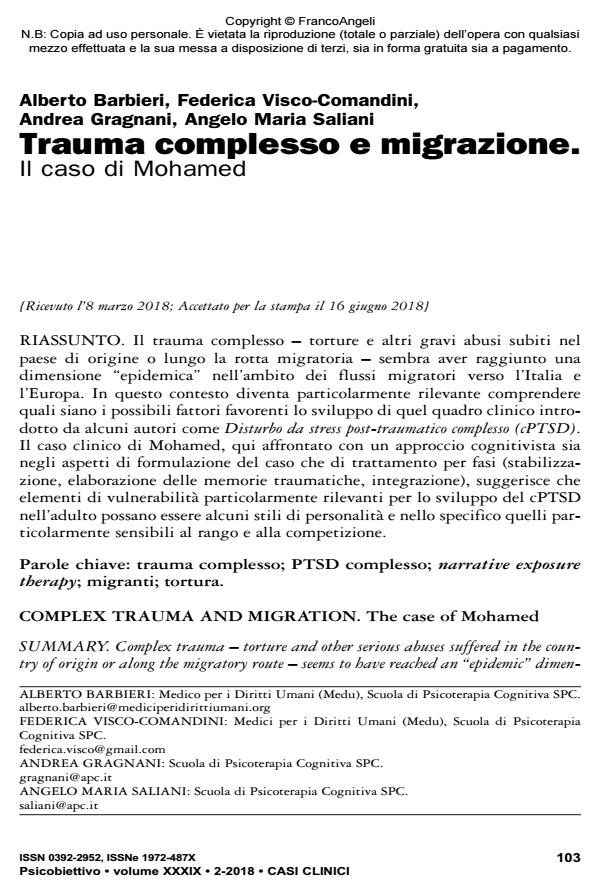Trauma complesso e migrazione. Il caso di Mohamed
Titolo Rivista PSICOBIETTIVO
Autori/Curatori Alberto Barbieri, Federica Visco-Comandini, Andrea Gragnani, Angelo Maria Saliani
Anno di pubblicazione 2018 Fascicolo 2018/2
Lingua Italiano Numero pagine 22 P. 103-124 Dimensione file 292 KB
DOI 10.3280/PSOB2018-002007
Il DOI è il codice a barre della proprietà intellettuale: per saperne di più
clicca qui
Qui sotto puoi vedere in anteprima la prima pagina di questo articolo.
Se questo articolo ti interessa, lo puoi acquistare (e scaricare in formato pdf) seguendo le facili indicazioni per acquistare il download credit. Acquista Download Credits per scaricare questo Articolo in formato PDF

FrancoAngeli è membro della Publishers International Linking Association, Inc (PILA)associazione indipendente e non profit per facilitare (attraverso i servizi tecnologici implementati da CrossRef.org) l’accesso degli studiosi ai contenuti digitali nelle pubblicazioni professionali e scientifiche
Il trauma complesso - torture e altri gravi abusi subiti nel paese di origine o lungo la rotta migratoria - sembra aver raggiunto una dimensione "epidemica" nell’ambito dei flussi migratori verso l’Italia e l’Europa. In questo contesto diventa particolarmente rilevante comprendere quali siano i possibili fattori favorenti lo sviluppo di quel quadro clinico introdotto da alcuni autori come Disturbo da stress post-traumatico complesso (cPTSD). Il caso clinico di Mohamed, qui affrontato con un approccio cognitivista sia negli aspetti di formulazione del caso che di trattamento per fasi (stabilizzazione, elaborazione delle memorie traumatiche, integrazione), suggerisce che elementi di vulnerabilità particolarmente rilevanti per lo sviluppo del cPTSD nell’adulto possano essere alcuni stili di personalità e nello specifico quelli particolarmente sensibili al rango e alla competizione.
Parole chiave:Trauma complesso; PTSD complesso; narrative exposure therapy; migranti; tortura.
Alberto Barbieri, Federica Visco-Comandini, Andrea Gragnani, Angelo Maria Saliani, Trauma complesso e migrazione. Il caso di Mohamed in "PSICOBIETTIVO" 2/2018, pp 103-124, DOI: 10.3280/PSOB2018-002007